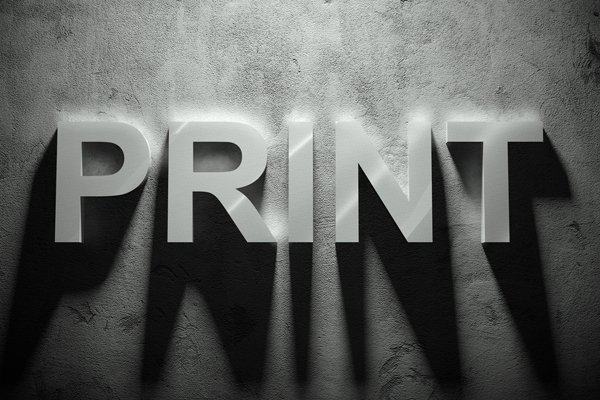Vaporware Hype Hurts the 3D-Printing Marketplace (Op-Ed)


Scott Dunham is a research manager with Photizo Group, a market research and consulting firm. He contributed this article to Tom's Guide's Expert Voices: Op-Ed & Insights.
I spend a whole lot of time tracking, studying, writing about, thinking about and engaging in lots of things related to the 3D-printing industry. If you've read any of my reports, blogs or other publications lately, you might know that I'm really interested in the development of the personal 3D-printing market.
So when people start to notice certain trends that negatively affect the industry, I feel obligated to get the message out.
In the tech world, everybody knows 3D printing is a hot commodity. In many ways, all of the recent media attention and interest from the investment community has benefited the technology and the overall 3D-printing market in a big way. The increased public awareness has fueled entrepreneurs to start businesses, increased competition in the market and led to some really creative applications.
Others argue that the increased focus on 3D printing has led to inflated expectations of what's possible with the technology, which, in turn, might lead to a bottom-out effect in the market when promises of an industrial revolution turn out to be overblown.
I've written about these opposing viewpoints previously. And yes, as someone who studies 3D printing professionally as a market analyst, I think it's OK to go ahead and get a little excited about 3D printing's future. But today, there's a growing trend in 3D-printer hardware development that needs to change.
I'm talking about the increasing presence of vaporware in the personal 3D-printing market. Vaporware is a loose term that was originally used to describe software but now applies to hardware that gets announced far in advance of its release without any real concrete details or specifications. In some extreme cases, the hardware developers never actually planned on releasing the technology. Sound like any startup 3D-printer manufacturers you've heard of over the last year?
Get the world’s most fascinating discoveries delivered straight to your inbox.
MORE: 2013 Best 3D Printer Reviews and Comparisons
Vaporware has made its way into personal 3D printing, primarily due to the explosion of the growth the segment has enjoyed over its short history. It just makes sense, really — as a relatively new technology market with massive upside potential develops, there are bound to be some people trying to cash in on it (some in less ethical ways than others).
Here's how vaporware has started to creep into the world of 3D printing. A developer — usually a startup company of some kind — makes a press announcement for its upcoming 3D printer. Sometimes, these announcements make some sort of radical claim about the product — whether it's a new feature, material property or superlow price. A couple of 3D mock-up images of the printer accompany the release, but other than that, technical specifications or information about the printer hardware is absent. Despite the lack of details, preorders are made available right away, usually through crowdfunding sites like Kickstarter or Indiegogo.
Then, once the company has some preorder cash or crowdfunded support, it can sit back and push back release dates or the development cycle as long as it wants. There's significant benefit to preannouncing a 3D printer far before its actually a real, physical product — it allows a developer to claim the product is the "first" to do something and gain support.
This type of activity goes beyond marketing. There's nothing wrong with marketing. The problem with vaporware is that it's typically rooted in dishonesty.
At this point, it would probably be prudent to make a disclaimer — this is not an attempt to point fingers at any group in particular, nor is it meant to dampen the spirit of entrepreneurship, innovation or even capitalism. There are lots of people out there with great ideas for 3D printing that need help bringing those ideas to life. To my knowledge, nobody is making off with people's money (yet). But the practice is dangerous, especially when lots of people are quick to get excited over 3D printing in today's market.
I bring up vaporware really to make two important points. First, with a lot of people out there looking at 3D printers for the first time, it is incredibly important that people do their homework to learn where to invest. The industry hasn't seen the end of the hyperbolic hardware announcements that will ultimately fail to deliver on inflated promises or expectations. If a 3D printer is extremely cheap and claims to be able to do something that printers twice its cost can't do, an investor should look extra hard into the details. If details aren't provided, then it's best to stay away — far away.
Of course, there will be truly innovative products that break down barriers — these usually thrive based on the strength of their design, brilliant engineering, and lots of hard work and innovation. And they certainly won't keep people in the dark about what actually makes their product great.
The second point is that manufacturers of desktop 3D printers — whether a small startup operation or the MakerBots and 3D Systems of the world — need to focus on adding value to their products. Making cheaper and cheaper 3D printers that are unreliable, constrictive and have poor output quality doesn't help anyone in the long run. Being intentionally vague about how a product actually works because it's design hasn't even been finished before it starts being sold doesn't help either.
The companies that can make a more reliable, more accurate and consistent desktop 3D printer are always going to come out ahead of anyone that needs to engage in vaporwarelike tactics to build hype around their mystery products.
This is an announcement to developers of 3D printers: 3D hardware is not all smoke and mirrors — 3D printers aren't actually all that complex, and many users know how they're supposed to work. Spend your effort developing a decent product that solves users' problems, and be forthright about it when at all possible. I promise you, it will be worth the effort.
This story was provided by Tom's Guide, a sister site to LiveScience. The views expressed are those of the author, contributed to the Tom's Guide's Expert Voices: Op-Ed & Insights section, and do not necessarily reflect the views of the publisher. This version of the article was originally published on Tom's Guide.



